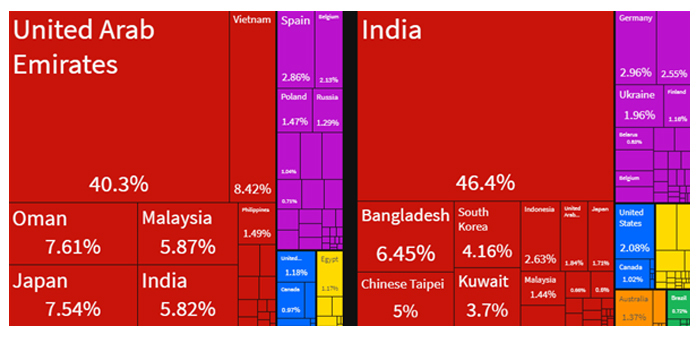India is a mineral rich country with a huge stock of limestone mineral resources available to meet the flourishing demand from the Cement sector. There is a noticeable requirement of limestone from the steel, chemical and paper industry too. Over the past decade, the imports of limestone mineral have grown exponentially at a CAGR of 21% indicating more attention is required towards mineral exploration and opening up of new mines.
In this period, the growth of domestic limestone production was aligned to the growth in cement manufacturing at a CAGR of approximately 6%.1 Rising demand from pharmaceuticals, packaging industry, food and beverage sectors has been a prime driver behind the healthy consumption of mineral limestone.2

Presently, India is the largest importer of limestone with ~46% global share followed by Bangladesh (6.5%), Taiwan (5%), South Korea (4%) and others. United Arab Emirates (UAE) is the top exporter of limestone globally representing 40% of the total trade. UAE is followed by Oman (7.6%), Japan (7.5%), Malaysia (5.87%) and India (5.82%) among major exporters. Figure illustrates global trade indicating top exporters (on the left) and top importers (right side block) along with respective share globally.

Allowing captive mine owners to sell a certain percentage of mineral in the open market is a welcome move by the Ministry of Mines, which will help address the increasing demand from the other sectors, it. This would strengthen India’s economic development while improving the trade deficit on account of mineral imports. Moreover, accelerated exploration and fast track auction in various States would help in meeting the regional needs of limestone across sectors.
